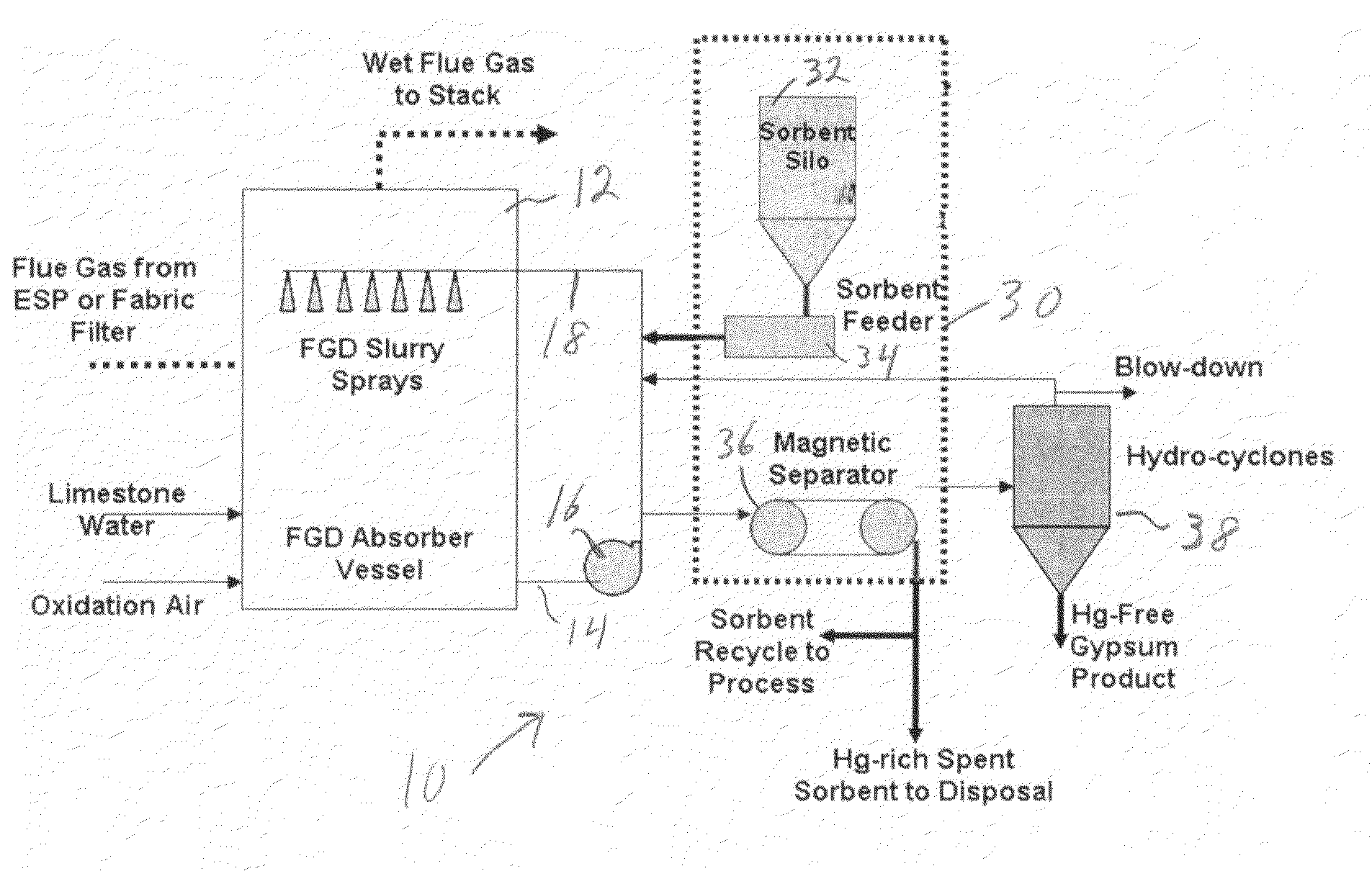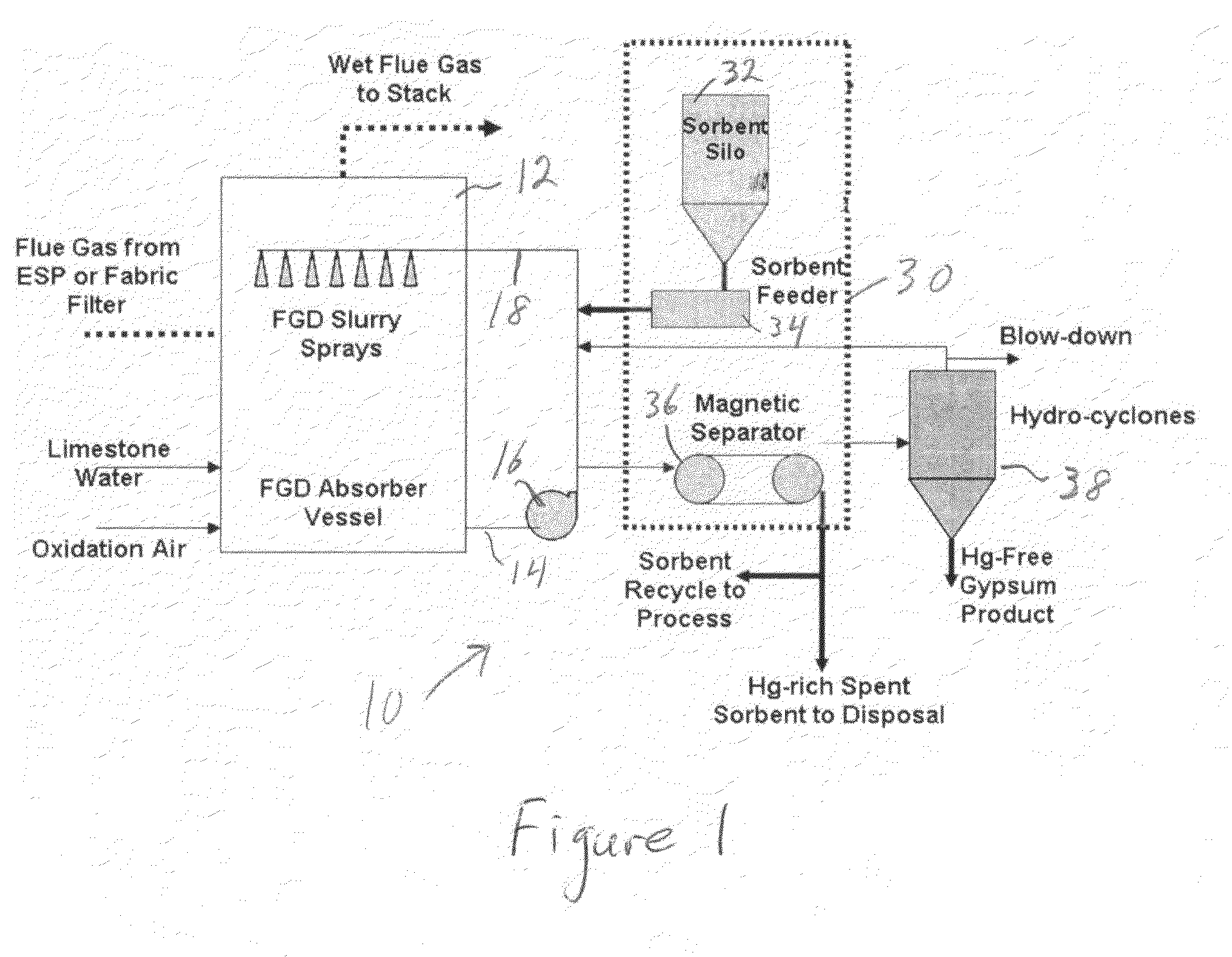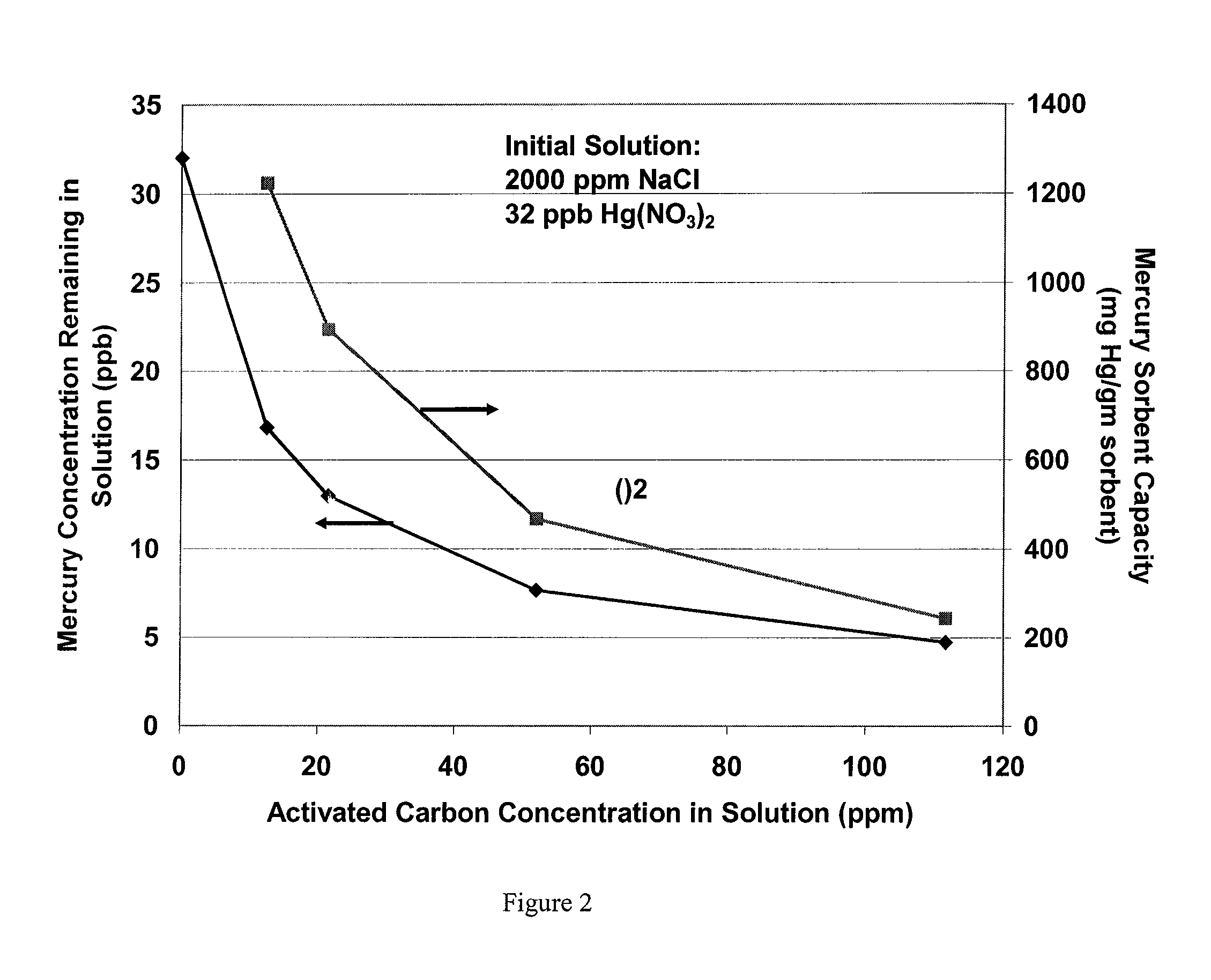System and method for sequestration and separation of mercury in combustion exhaust gas aqueous scrubber systems
- Summary
- Abstract
- Description
- Claims
- Application Information
AI Technical Summary
Benefits of technology
Problems solved by technology
Method used
Image
Examples
Embodiment Construction
[0026]The invention features a system and method for sequestration and separation of mercury in combustion exhaust gas aqueous scrubber systems. The invention applies to the treatment of flue gas containing mercury (both elemental and water-soluble oxidized mercury compounds) and sulfur dioxide or other acid gas components such as HCl. In the preferred embodiment, treatment occurs in a wet flue gas desulfurization scrubber or a wet acid gas scrubber; such scrubbers are primarily used to remove sulfur dioxide or other acid gas components such as HCl. Alkaline material such as limestone, lime, magnesium-enhanced lime, dolomite, sodium compounds or magnesium compounds, for example, in the scrubbing liquor can be used to treat the acid gas.
[0027]Gas phase elemental mercury)(Hg0) is water insoluble and will pass through the scrubber without being affected, while the water soluble gas phase oxidized mercury species (e.g. HgCl2) will be absorbed into the aqueous scrubber solution and will ...
PUM
| Property | Measurement | Unit |
|---|---|---|
| Fraction | aaaaa | aaaaa |
| Particle size | aaaaa | aaaaa |
| Particle size | aaaaa | aaaaa |
Abstract
Description
Claims
Application Information
 Login to View More
Login to View More - R&D
- Intellectual Property
- Life Sciences
- Materials
- Tech Scout
- Unparalleled Data Quality
- Higher Quality Content
- 60% Fewer Hallucinations
Browse by: Latest US Patents, China's latest patents, Technical Efficacy Thesaurus, Application Domain, Technology Topic, Popular Technical Reports.
© 2025 PatSnap. All rights reserved.Legal|Privacy policy|Modern Slavery Act Transparency Statement|Sitemap|About US| Contact US: help@patsnap.com



